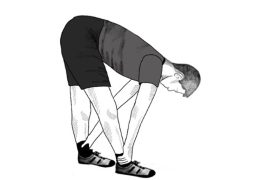If you’ve ever suffered from the debilitating pain of migraines, you’ve probably searched for any solution to ease the agony. For many, the heat of summer can worsen migraines, making these months particularly draining and challenging. Research consistently highlights yoga as a potential remedy for headache and migraine relief, offering a valuable addition to pain management strategies. Recent studies have shown that individuals who integrated a regular yoga practice—five days a week—into their treatment routine experienced notable reductions in migraine frequency and intensity, along with lower levels of physiological stress. This underscores yoga’s effectiveness as a holistic approach to managing migraines, providing hope and relief for those seeking alternatives to conventional care methods.
Yoga proves remarkably effective not only in alleviating ongoing migraines but also in preventing their frequent recurrence. By integrating breath with movement, yoga provides a holistic approach to synchronizing body and mind, fostering presence and grounding. This practice offers a unique opportunity to manage migraines by addressing both physical tension and mental stress, which are often contributing factors. Therefore, incorporating yoga into your routine can potentially offer the relief and management solution you’ve been seeking for migraines.
Child’s Pose (Balasana):
- Start by kneeling on the mat with knees apart and big toes touching.
- Extend arms forward, keeping them shoulder-width apart, and lower torso between thighs.
- Rest forehead on the mat, hips sinking towards heels, maintaining a long spine.
- Hold for 8-10 breaths.
- Benefits: Relaxes neck, shoulders, and back, soothes headaches, and promotes calmness and circulation.
Supine Twist (Supta Matsyendrasana):
- Lie on your back, bring knees towards chest, then lower them to one side.
- Extend arms out to the sides, palms facing up.
- Optionally, turn gaze towards the ceiling or opposite hand for a deeper stretch.
- Hold for 6 breaths each side.
- Benefits: Releases tension in spine and back muscles, improves spinal mobility, enhances circulation, aids digestion.
Forward Fold (Uttanasana):
- Stand with feet hip-width apart, bend forward at hips, extending head towards floor.
- Soften knees, keep heels grounded, and gaze focused.
- Hold for 6-8 breaths.
- Benefits: Releases tension in neck, shoulders, and upper back, increases blood flow to brain, reduces stress and promotes relaxation.
Legs Up the Wall (Viparita Karani):
- Lie on back with buttocks against a wall, extend legs upwards against wall.
- Keep upper body relaxed, arms alongside torso.
- Hold for at least 10 breaths.
- Benefits: Relieves tension and stress, improves blood circulation towards brain, promotes relaxation and reduces inflammation.
Corpse Pose (Savasana):
- Lie flat on back, legs extended comfortably, arms resting alongside body with palms up.
- Close eyes, relax muscles, breathe deeply.
- Remain in pose for several minutes.
- Benefits: Promotes deep relaxation, reduces muscle tension and mental fatigue, improves sleep quality and overall well-being.
These yoga poses are designed to be accessible and effective for managing migraines. They focus on calming the nervous system, improving circulation, releasing muscle tension, and promoting relaxation—factors crucial in mitigating migraine triggers. Regular practice can enhance overall resilience to stress and reduce the frequency and intensity of migraines, especially during summer when triggers like heat and dehydration are prevalent.
For beginners, it’s advisable to consult with a healthcare provider or yoga instructor to ensure safe and proper practice. Integrating these poses into your routine, whether as preventative measures or during migraine onset, can contribute significantly to managing and alleviating migraine discomfort effectively.
Disclaimer:
The information contained in this article is for educational and informational purposes only and is not intended as a health advice. We would ask you to consult a qualified professional or medical expert to gain additional knowledge before you choose to consume any product or perform any exercise.







